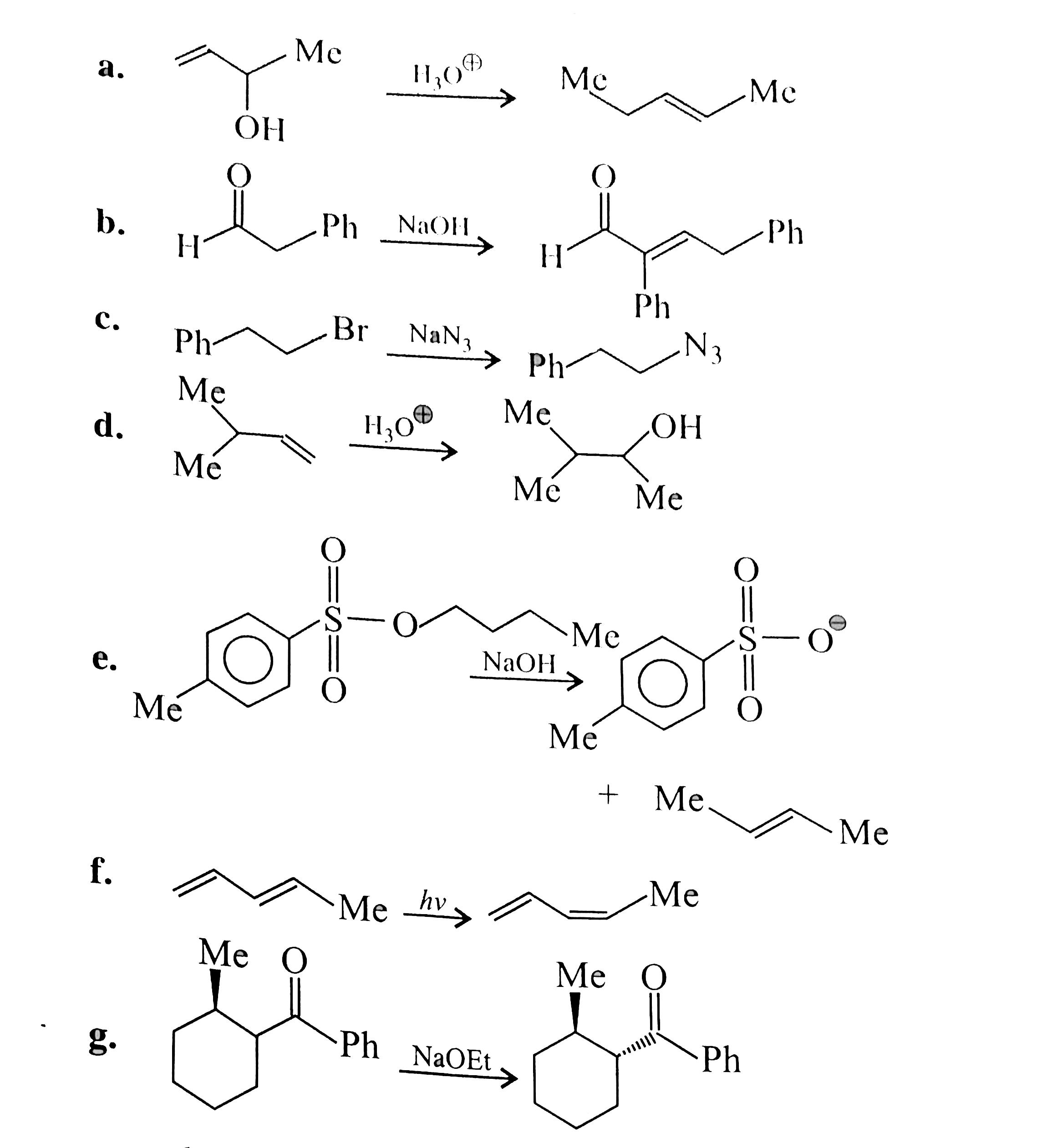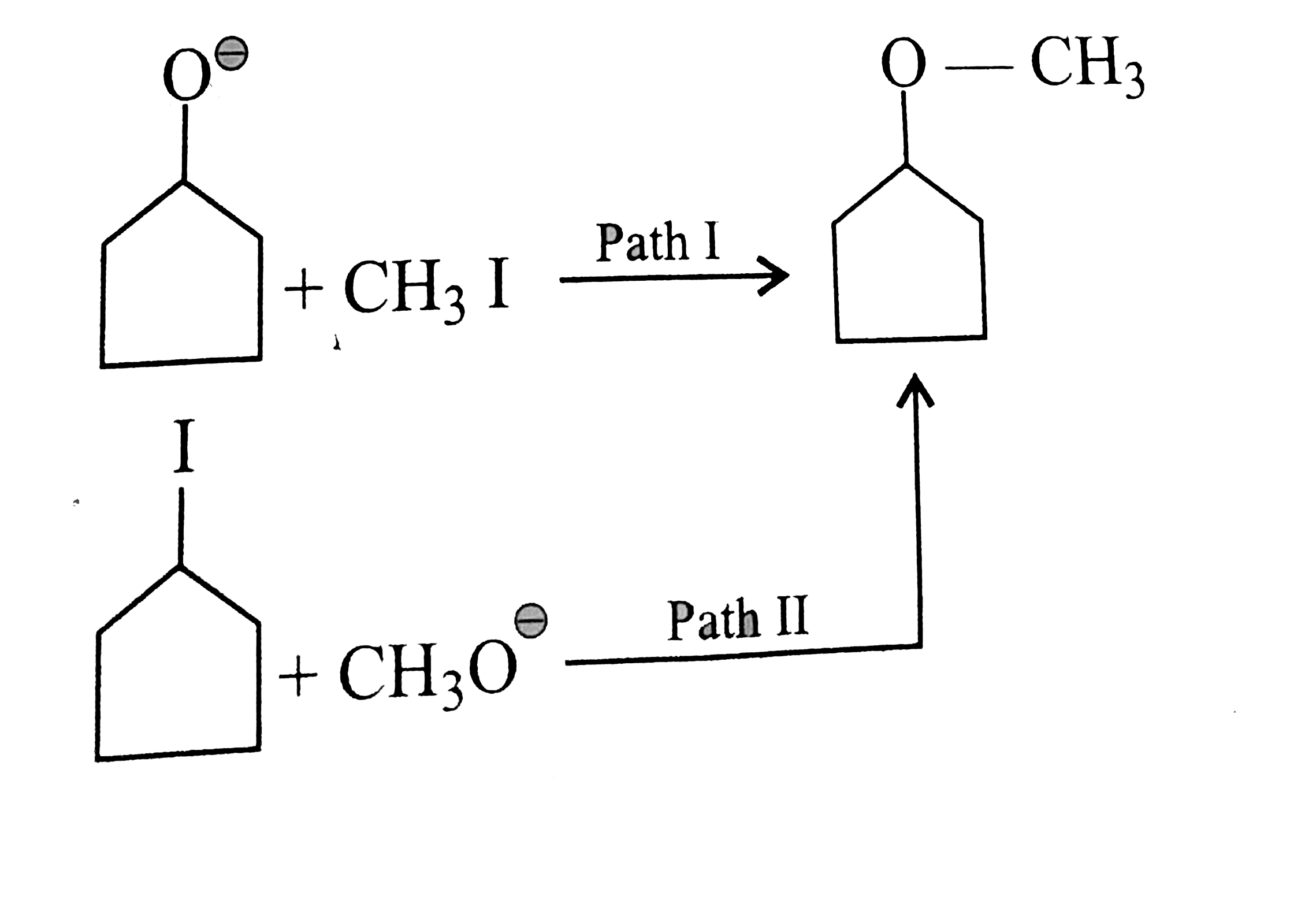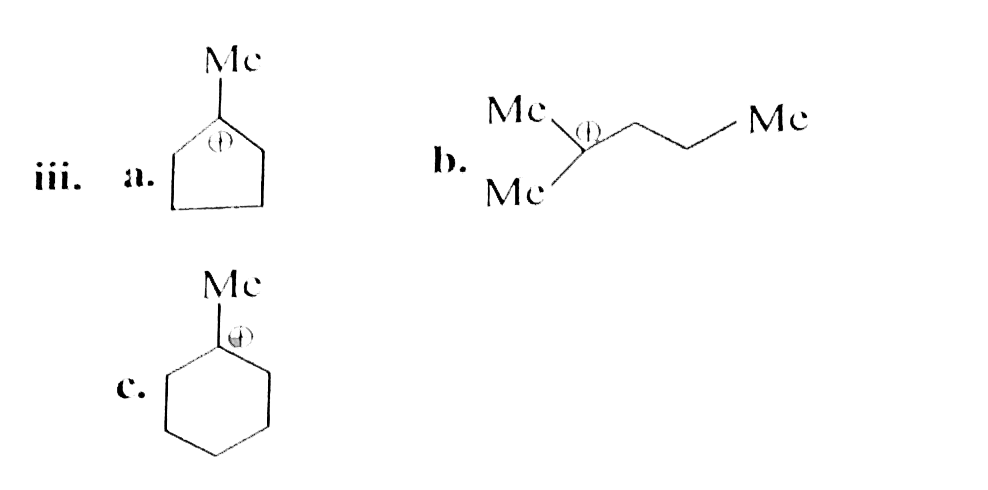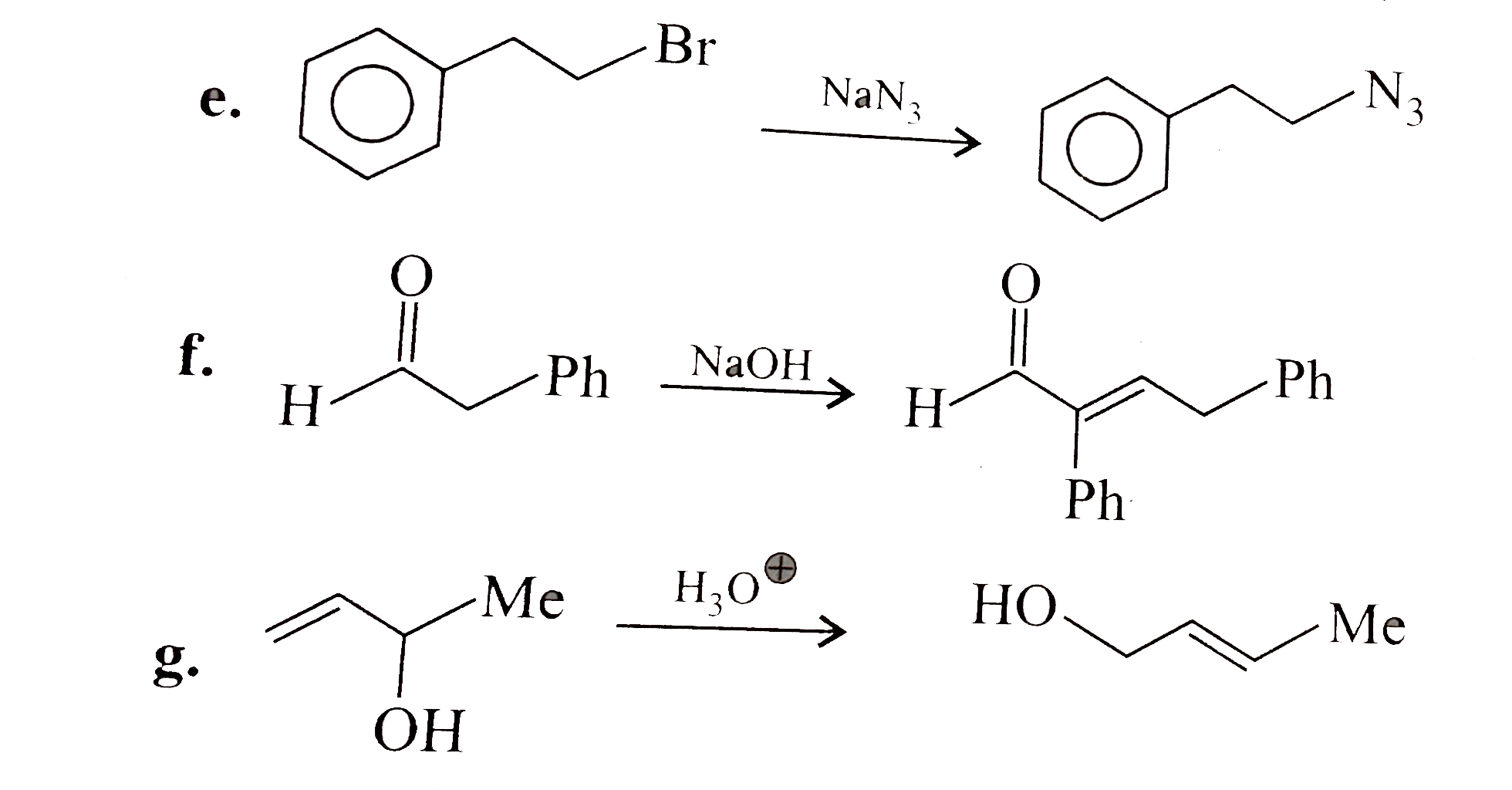i. Classify the following reactions as an addition elimination substituation condensation rerrangement geometrical isomerisation, or oxidation/reduction.

ii. Show both substition and elmination products in these reactions.

iii. SHow the rearranged carbocations that are expected form these carbocations.

iv. WHich path is better for the reaction ?

i. a. Reraangement
b. Aldol condensation
c. Substituion (SN2)
d. Addition (EA)
e. Oxidative cleavage
f. Geomeetrical isomerisation
g. Geometrical isomerisation
ii. 
iii. 
iv. Path 1 is better. It is SN2 reaction and RX⇒1∘. Williamoson's synhesis.
Topper's Solved these Questions
- AROMATIC COMPOUNDS AND ALKYL AND ARYL HALIDES BOOK - CENGAGE CHEMISTRY ENGLISHCHAPTER - AROMATIC COMPOUNDS AND ALKYL AND ARYL HALIDES EXERCISE - Exercises Subjective
17 Videos
- AROMATIC COMPOUNDS AND ALKYL AND ARYL HALIDES BOOK - CENGAGE CHEMISTRY ENGLISHCHAPTER - AROMATIC COMPOUNDS AND ALKYL AND ARYL HALIDES EXERCISE - Exercises Concept Application Type
2 Videos
- AROMATIC COMPOUNDS AND ALKYL AND ARYL HALIDES BOOK - CENGAGE CHEMISTRY ENGLISHCHAPTER - AROMATIC COMPOUNDS AND ALKYL AND ARYL HALIDES EXERCISE - Solved Problems
37 Videos
- APPENDIX INORGANIC VOLUME 2BOOK - CENGAGE CHEMISTRY ENGLISHCHAPTER - APPENDIX INORGANIC VOLUME 2EXERCISE - Short Answer Type
179 Videos
- BIOMOLECULESBOOK - CENGAGE CHEMISTRY ENGLISHCHAPTER - BIOMOLECULESEXERCISE - Exercises Archives (Analytical And Descriptive)
8 Videos
Similar Questions
Classify the following reactions as addition, elimination, substitution, condensation, rearrangement, geometric isomerisation, or oxidation/reduction.

 .
.
View SolutionClassify the following reactions as addition, elimination, substitution, condensation, rearrangement, geometric isomerisation, or oxidation/reduction.

 .
.
View Solution
Knowledge Check
With which of the following reagents, carbonyl compound shows addition cum elimination reaction ?
APCl5BBrody's reagentCHCNDAll of theseWith which of the following reagents, carbonyl compound shows addition cum elimination reaction
APCI5BBrady's reagentCHCNDAll of theseWith which of the following reagents, carbonyl compound shows addition cum elimination reaction
APCl5BBrady's reagentCHCNDall of these
Which of the following bromides is the major product of the reaction shown below, assuming that there are no carbocation rearrangement?

View SolutionAddition of HCl to 3, 3-dimethyl-1-butene yields two products, one of which has a rearranged carbon skeleton. Among the following carbocations, selectr the possible intermediates in that reaction?

View SolutionDi-tert-glycols rearrange in the presence of acid to give alpa-tertiary ketones. The trivial name of the simplest glycol of this type is pinacol, and this type of reaction therefore is named pinacol rearrangement (in this specific case, the reaction is called a pinacol-pinacolone rearrangement). The rearrangement involves 4 steps. one of the hydroxyl groups is protonated in the first step. A molecule of water is eliminated in the second step and a tertiary carbocation is formed. The carbocation rearranges in the third step into a more stable carboxonium ion via a [1,2] rearrangement. In the last step, the carboxonium ion is deprotonated and the product ketone is obtained.


How many products obtained in above reaction?
View SolutionDi-tert-glycols rearrange in the presence of acid to give α-trtiary ketones. The trivial name of the simplest glycol of this type is pinacol, and this type of reaction therefore is named pinacol rearrangement (in this specific case, the reaction is called a pinacol-pinacolone rearrangement). The rearrangement involves 4 steps. one of the hydroxyl group is protonated in the first step. A molecule of water is eliminated in the second step and a tertiary carbocation is formed. the carbocation rearranges in the third step into a more stable carboxonium ion via a [1, 2] rearrangement. In the last step, the carboxonium ion is deprotonated and the product ketone is obtained.


How many products obtained in above reaction ?
View SolutionDi-tert-glycols rearrange in the presence of acid to give α-trtiary ketones. The trivial name of the simplest glycol of this type is pinacol, and this type of reaction therefore is named pinacol rearrangement (in this specific case, the reaction is called a pinacol-pinacolone rearrangement). The rearrangement involves 4 steps. one of the hydroxyl group is protonated in the first step. A molecule of water is eliminated in the second step and a tertiary carbocation is formed. the carbocation rearranges in the third step into a more stable carboxonium ion via a [1, 2] rearrangement. In the last step, the carboxonium ion is deprotonated and the product ketone is obtained.


Product 'P' is :
View Solution
